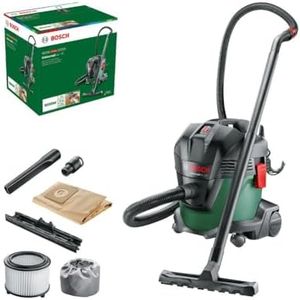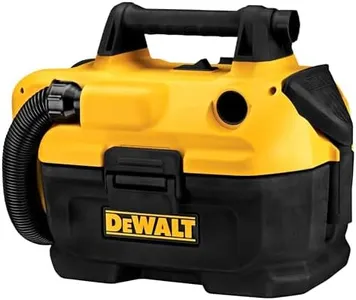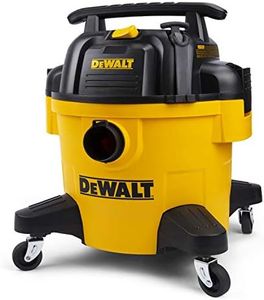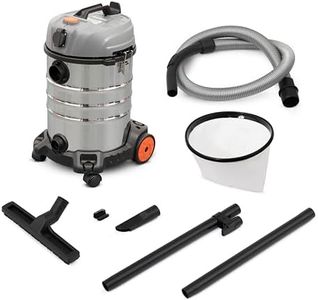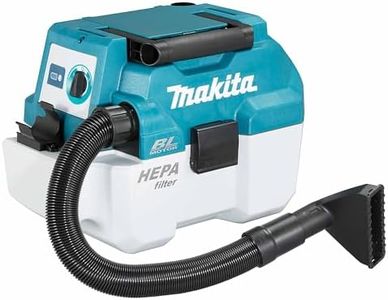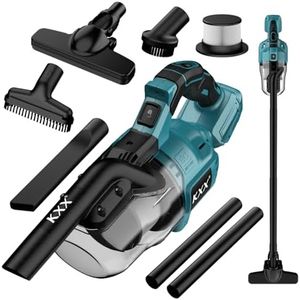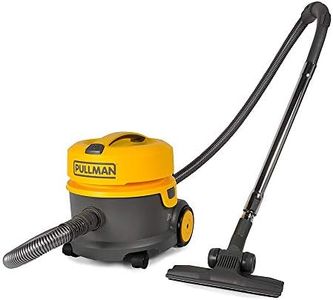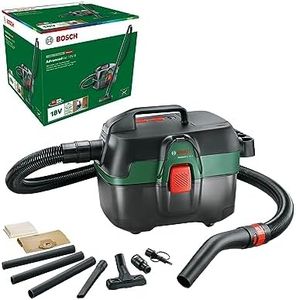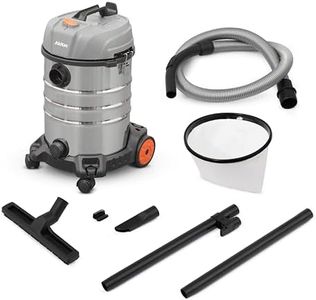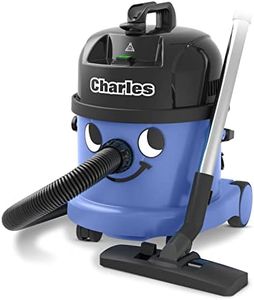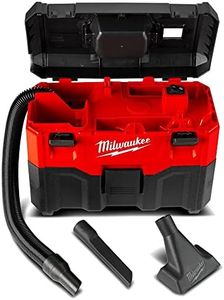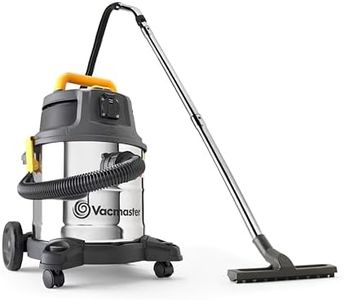We Use CookiesWe use cookies to enhance the security, performance,
functionality and for analytical and promotional activities. By continuing to browse this site you
are agreeing to our privacy policy
10 Best Industrial Shop Vac
From leading brands and best sellers available on the web.Buying Guide for the Best Industrial Shop Vac
Choosing an industrial shop vac is all about matching the vacuum’s power and features to the types of messes and environments you’ll be working in. Industrial vacuums are made for bigger challenges than a typical household model, so you’ll want something powerful and durable enough to handle heavy debris, liquids, and frequent use. Think about the size of your workspace, the materials you’ll be cleaning, and how often you’ll need to move the vacuum around. Evaluating the most important specifications ensures you select a shop vac that won’t disappoint when the job gets tough.Horsepower (HP)Horsepower refers to the strength of the vacuum’s motor, which impacts its suction power. A higher horsepower means more suction, letting the shop vac pick up heavier debris and handle larger messes quickly. Horsepower values typically start around 3-4 HP for basic models, while more demanding industrial environments go for 5 HP and above. Lighter jobs like sawdust, wood shavings, and small spills may be handled by lower horsepower models, but construction sites and larger debris will need the extra strength of a higher HP motor. Choose based on the toughest tasks you expect to tackle most often.
Tank CapacityTank capacity tells you how much debris or liquid the vacuum can hold before you need to empty it. For industrial shop vacs, capacity ranges from around 8 gallons to more than 20 gallons. Smaller capacities are easier to handle and maneuver, but fill up quickly in larger areas. Bigger tanks can go longer without emptying—ideal for continuous cleaning or heavy-duty jobs. If your work involves a lot of liquid pickups or large quantities of debris, a larger tank saves time and hassle, while smaller tanks are sufficient for spot cleaning and lighter work.
Airflow (CFM)CFM stands for Cubic Feet per Minute and measures the volume of air the vacuum can move. Higher CFM means the vacuum will clear dust and debris more quickly and effectively, especially over bigger areas. For general use, a CFM in the range of 100-150 is adequate, while very demanding tasks or fine dust control may need CFM rates above 150. If you’re often cleaning up fine particles or expansive areas, prioritize this spec to make the job faster and more thorough.
Sealed Pressure (Water Lift)Sealed pressure, or water lift, measures the vacuum's ability to lift liquid or heavy debris, represented in inches. This is especially important for wet messes or dense materials. Lower water lift values (about 50-70 inches) are fine for basic dirt and dust, but sticky or heavy wet materials are much easier to clean at higher water lift ratings (above 90 inches). If wet cleanup is a regular part of your work, choose a vac with a higher water lift for best results.
FiltrationFiltration system quality determines how well the shop vac traps dust and fine particles, keeping them from re-entering the air. Basic foam or cloth filters are sufficient for general debris, but HEPA or high-efficiency filters are better if you're cleaning up hazardous dust or want to improve air quality—important in woodworking or areas where health is a concern. Think about the cleanliness requirements of your workspace and whether you need higher levels of filtration to protect equipment or people.
Portability and DesignPortability relates to the weight, size, and how easily the vacuum can be moved around your site. Larger-capacity or higher-powered vacuums may be bulkier, but some have features like large wheels, detachable tanks, or handle designs for easier transport. If you’ll be moving your shop vac between locations or up and down stairs, prioritize portability. For stationary jobs, a larger and heavier unit may not be an issue.
Durability and Build QualityDurability covers the materials and construction of the vacuum, which are crucial for longevity in demanding environments. Tanks made from stainless steel or heavy-duty plastics last longer and endure more abuse than lightweight or thinner options. Look for strong casters, reinforced hoses, and solid connections to ensure the vac holds up to frequent, rough use. This is especially important if you'll use the vac every day or in harsh conditions.
